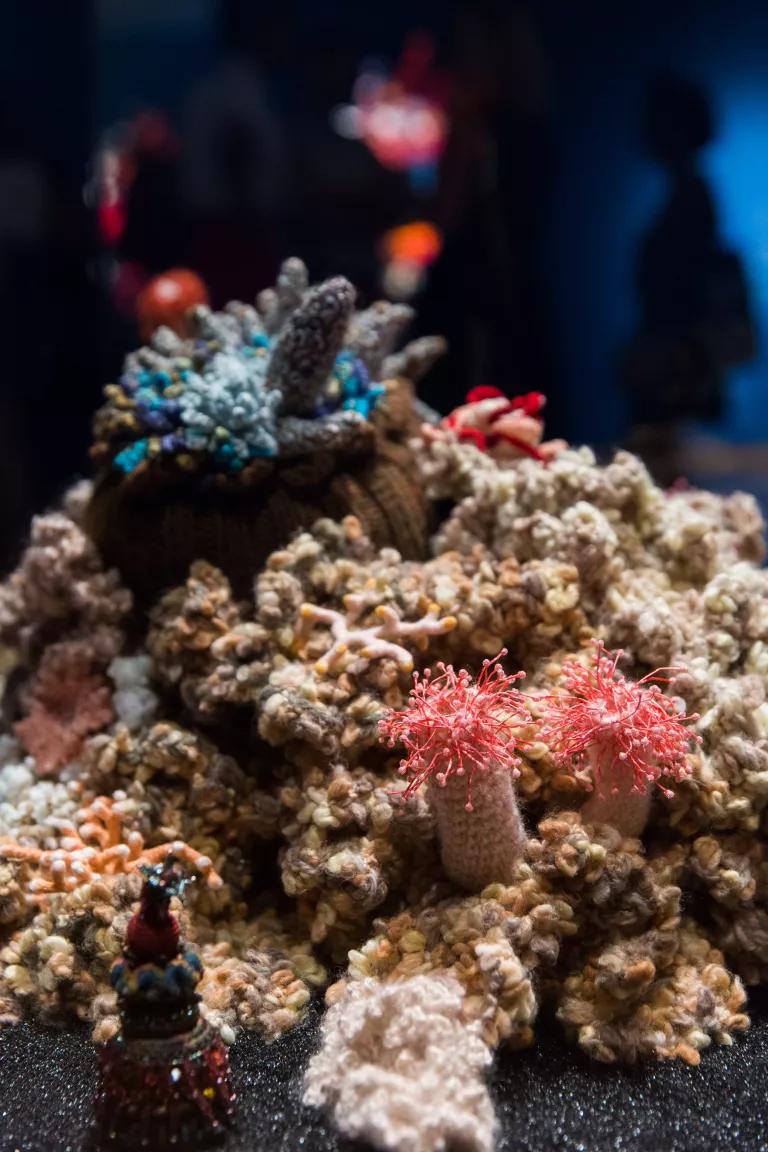What Do Corals and Crochet Have in Common? More Than You Think.
For more than a decade, crafty twin sisters have been stitching up activism for our ailing oceans.

Twin sisters Margaret and Christine Wertheim first got their crochet hooks into the global coral crisis back in 2005. The ecological devastation attacking the Great Barrier Reef—a consequence of pollution and warming waters—hit too close to home for the pair, who had grown up in Queensland, Australia. So the sisters began stitching together their very own woolen reef ecosystem.
It’s not surprising that the Wertheims chose to create a tactile homage to this environmental wonder-cum-disaster. The women are the founders of the Institute for Figuring, an organization that takes a hands-on, artistic approach to public science education.

There is a reason they chose this particular handicraft. Mathematician Daina Taimina began using crochet to model the complicated structure of a hyperbolic plane in 1997. Ever since, this kind of geometry has been spotted in all kinds of living things, from curly lettuce leaves to—you guessed it—coral. It turns out crochet’s geometry naturally lends itself to the undulating and frilly forms of marine invertebrates.
Since the twins began crafting yarn corals in their Los Angeles living room 11 years ago, their project has taken on a life of its own. Crochet Coral Reef has been exhibited at the Andy Warhol Museum in Pittsburgh, the Hayward Gallery in London, the Science Gallery in Dublin, and the Smithsonian National Museum of Natural History in Washington, D.C. So far, more than 8,000 crocheters have contributed to satellite reefs in their own communities.
Sadly, the problems plaguing our seas have amplified since the sisters started stitching in 2005. A 2015 study found that humans send between 5.3 million and 14 million tons of plastic into the ocean every year. In October 2015, NOAA declared the third-ever global coral bleaching event, which became the most severe and widespread event the Great Barrier Reef has ever endured. Making matters worse, 2016 will almost certainly be the hottest year on record, likely leading to more bleached coral.
These grim facts are interwoven with the project’s latest exhibition, at the Museum of Arts and Design in New York City. In addition to the bright, vivid yarns evocative of what healthy corals should look like, Crochet Coral Reef: Toxic Seas includes ghostly white wool and branches tangled in bits of plastic. The Midden, a fishing net heaped with four years’ worth of the Wertheims’ own plastic trash, hangs in the middle of the exhibit.
Crochet Coral Reef: Toxic Seas is on view through January 22, 2017.




This article was originally published on onEarth, which is no longer in publication. onEarth was founded in 1979 as the Amicus Journal, an independent magazine of thought and opinion on the environment. All opinions expressed are those of the authors and do not necessarily reflect the policies or positions of NRDC. This article is available for online republication by news media outlets or nonprofits under these conditions: The writer(s) must be credited with a byline; you must note prominently that the article was originally published by NRDC.org and link to the original; the article cannot be edited (beyond simple things such grammar); you can’t resell the article in any form or grant republishing rights to other outlets; you can’t republish our material wholesale or automatically—you need to select articles individually; you can’t republish the photos or graphics on our site without specific permission; you should drop us a note to let us know when you’ve used one of our articles.

How to Become a Community Scientist
Biodiversity 101
How to Start Saving the Planet in 100 Days: the Joe Biden Edition